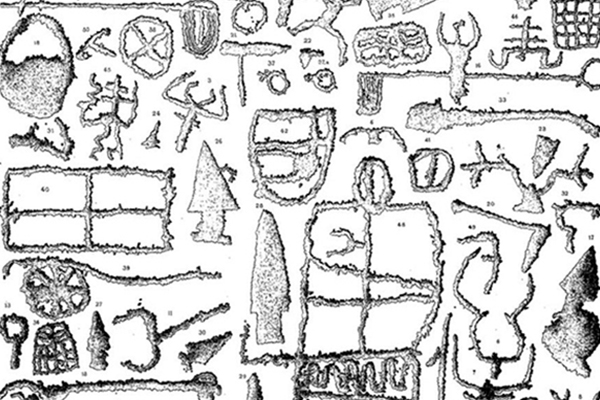Shape, graphic synthesis and contemporaneity? The case of the rock engravings of Monte Bego
DOI:
https://doi.org/10.15168/xy.v4i7.144Abstract
“The image durability is therefore a guarantee of human self–awareness”. From these words, taken from the text of the call for paper of this issue of XY, we must start to read today the incredible rock engravings of Mount Bego, which constitute a heritage handed down intact thanks to the support that houses them and that show a vitality and a valid also for our age, thanks to the visual efficacy and the unambiguity and clarity of the meaning. One of the most usual and complex operations in the graphic field, in fact, is certainly that of the visual synthesis of shapes, in such a way as to transform them from three–dimensional objects in iconic signs. In this sense, all of contemporary design world of signs and the instructions for use refer to exactly this principle, through the formulation of pictograms able to immediately understandable even articulated and that is exactly what happens with the representations of Mount Bego. Starting from 1897, Clarence Bicknell, an Englishman who had moved to Bordighera on the Italian Riviera di Ponente, began a campaign of stone carvings detection found on the slopes of Mount Bego, the French Maritime Alps, about 50 km North of the coast between Monaco and Ventimiglia and bring to a heritage of images dating back to the period between the final Neolithic period (3000 BC) and the Iron age, with the largest production dating back to the Bronze age (1800–1500 BC). The operated graphical summary for transmitting information is breathtaking in its immediacy and contemporaneity: the images reduce to two dimensional form mostly objects, but also animals and men, as well as some geometric shapes instinctively interpreted as maps ahead of its time and give the opportunity for a comparison of the signs of engravings of Mount Bego and some symbols in current use today. The purpose of the work is to make evident the processes of identifying the characteristic elements, which constitute an object perceptually and which are by always heritage of man, remain almost identical over time, to witness the permanence of the signs that respond to these processes; this, as mentioned, also thanks to the permanence of the support on which this sign was developed.


